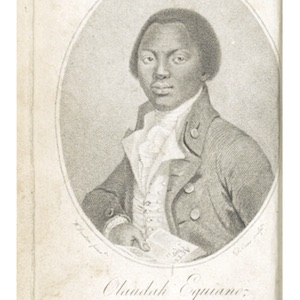Imperial/ Colonial

Adventure in New Zealand, from 1839 to 1844
E. J. Wakefield was 19 years of age when he sailed from England, in 1839, on the New Zealand Company vessel, Tory, as secretary to his uncle, Colonel William Wakefield.

A Narrative of the Life of Mrs. Mary Jemison
In 1753, 15 year old Mary Jemison was captured by Indians along the Pennsylvania frontier during the Seven Years' War between the French, English, and Indian peoples of North America.

Excerpts from The Interesting Narrative of the Life of Olaudah Equiano
One of the very first slave narratives, The Interesting Narrative of Olaudah Equiano (1745-1797), served as a prototype for the well-known slave autobiographies of the 19th century written by such fugitive slaves as Frederick Douglass and Harriet Jacobs.

The Interesting Narrative of the Life of Olaudah Equiano: Kidnapping
From the 16th to the 18th centuries, an estimated 20 million Africans crossed the Atlantic to the Americas in the trans-Atlantic slave trade.

The Interesting Narrative of the Life of Olaudah Equiano: Slave Auction
From the 16th to the 18th centuries, an estimated 20 million Africans crossed the Atlantic to the Americas in the trans-Atlantic slave trade.

A Narrative of the Life and Adventures of Venture A Native of Africa
In this excerpted source, Venture Smith recalls his experiences in the slave trade as a child. This source is especially important, as Smith gives a very vivid account of slave raiding, a common practice that took place during the peak years of the slave trade in the 18th century.

Indian Tales of the Great Ones
Born in 1870 into a Parsee family in India, Cornelia Sorabji (1870–1954) became a writer and a lawyer. By the end of the Victorian period, many elite Indian men had traveled to Britain to study.

Wanderings of a Pilgrim in Search of the Picturesque
From 1600 to the early 1800s, few officials of the English East Indian Company lived with English wives in India. This practice began to change as transportation became easier with the development of steamships.

Journal of Jan van Riebeeck
Krotoa, called Eva by the Dutch, is the first Khoikhoi woman to appear in the European records of the early settlement at the Cape as an individual personality and active participant in cultural and economic exchange.

Christmas Poem, Pima Indian School
The poem and photographic collage is the work of students at the Pima Indian School boarding school near Phoenix, Arizona, and is part of an album probably owned by the school matron. The school was one of some 150 institutions for Indian wards of the U.S. Government.